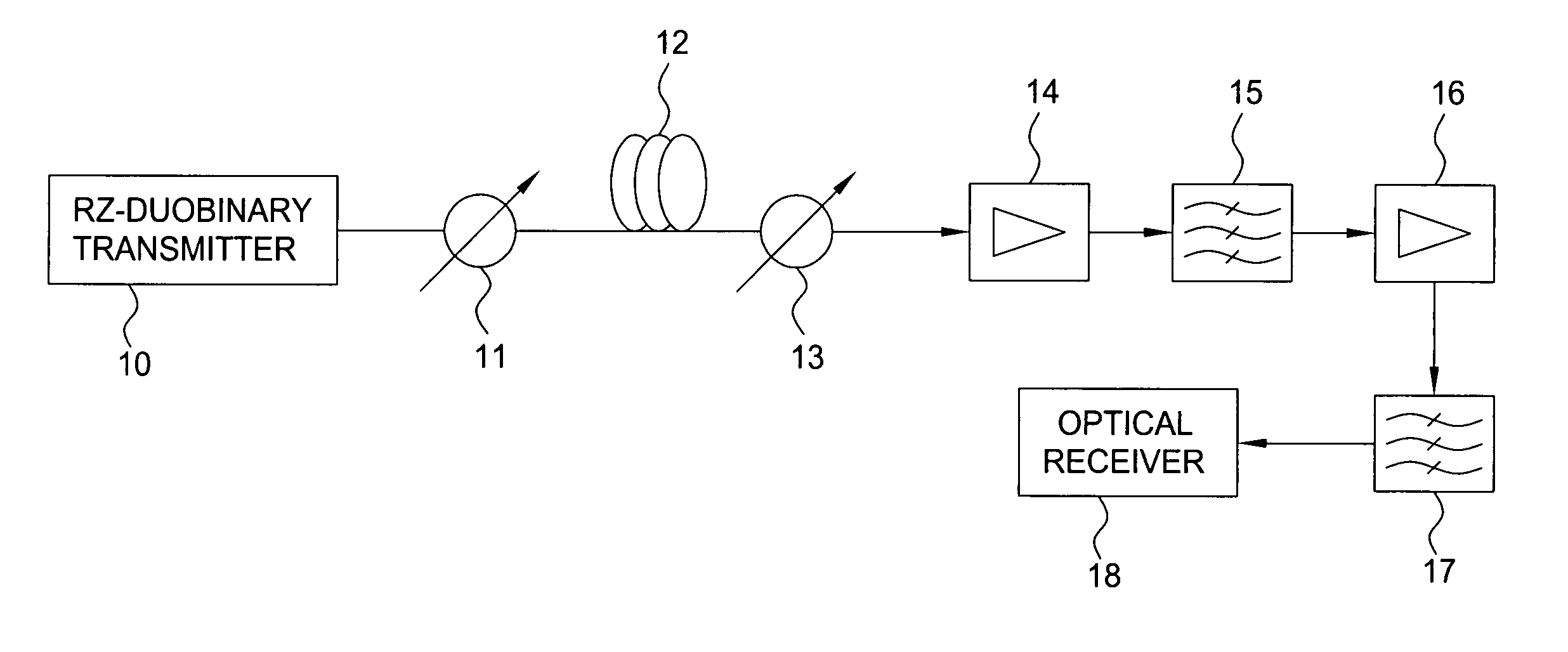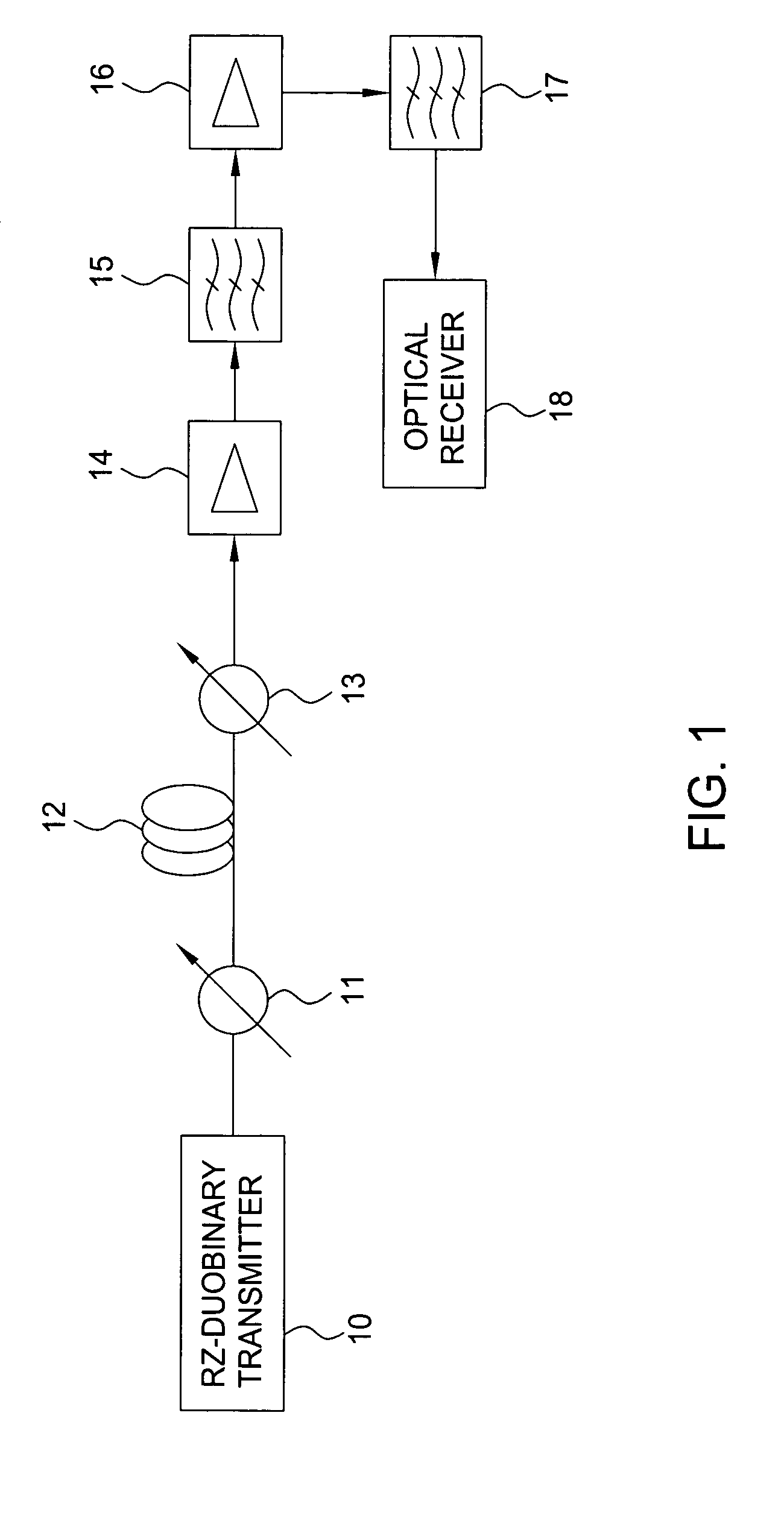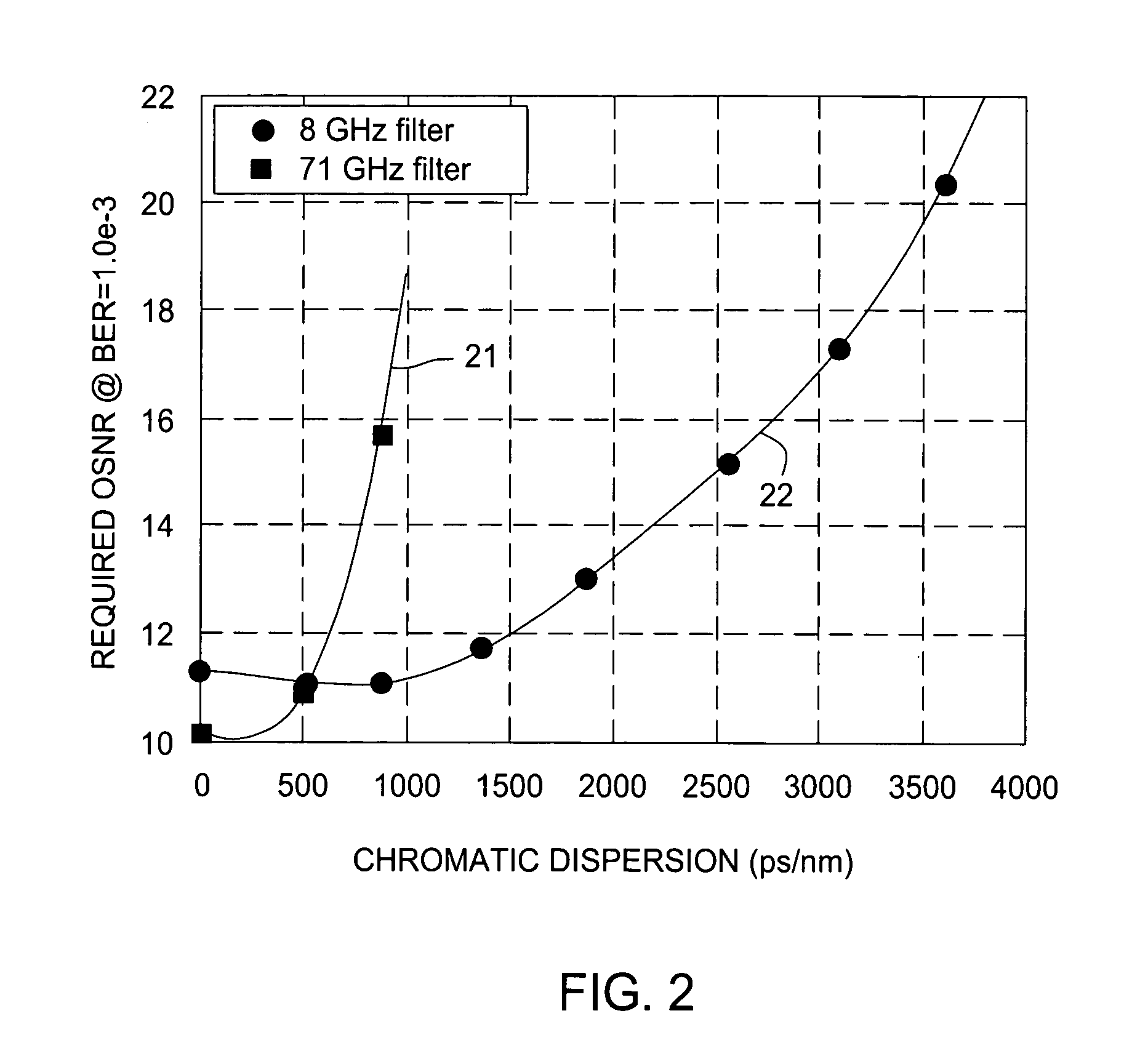Optical RZ-duobinary transmission system with narrow bandwidth optical filter
a transmission system and optical filter technology, applied in electromagnetic transmission, electrical equipment, transmission, etc., can solve the problems of reducing system performance, affecting the performance of rz-duobinary against chromatic dispersion, so as to reduce the filter bandwidth, increase the chromatic dispersion tolerance of signals, and balance the sensitivity of the receiver against chromatic dispersion. tolerance
- Summary
- Abstract
- Description
- Claims
- Application Information
AI Technical Summary
Benefits of technology
Problems solved by technology
Method used
Image
Examples
Embodiment Construction
[0014] Duobinary signaling offers a compact spectrum and good transmission performance in optical transmission systems. The NRZ and RZ-duobinary formats offer complementary results. NRZ-duobinary signaling tolerates chromatic dispersion well while being less tolerant to system nonlinearities; RZ-duobinary signaling, on the other hand, tolerates system nonlinearities well while being less tolerant to chromatic dispersion. System nonlinearities include, but are not limited to, inter-channel and intra-channel impairments such as four-wave mixing and cross-phase modulation.
[0015] Since NRZ-duobinary signaling exhibits complementary traits to RZ-duobinary signaling, efforts to optimize system and receiver performance tend to be successful in one regime and not in the other. For example, optical filters are placed in or near the optical receiver in order to reject amplified spontaneous emission (ASE) noise and, thereby, reduce signal-independent ASE-ASE beat noise. If a too narrow filter...
PUM
 Login to View More
Login to View More Abstract
Description
Claims
Application Information
 Login to View More
Login to View More - R&D
- Intellectual Property
- Life Sciences
- Materials
- Tech Scout
- Unparalleled Data Quality
- Higher Quality Content
- 60% Fewer Hallucinations
Browse by: Latest US Patents, China's latest patents, Technical Efficacy Thesaurus, Application Domain, Technology Topic, Popular Technical Reports.
© 2025 PatSnap. All rights reserved.Legal|Privacy policy|Modern Slavery Act Transparency Statement|Sitemap|About US| Contact US: help@patsnap.com



